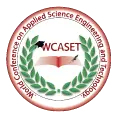The Biggest Developments In Engineering
- The Widespread Infiltration of AI
Artificial intelligence is expected to be the biggest talking point of the coming decade. It has already started to expand its footprint across diverse sectors of engineering and software, particularly in generative design applications that are capable of automatically optimizing CAD designs to adequately match the practical interpretation of a part.
Numerous tech companies are also developing AI systems to advise engineers on material selection and compliance. Meanwhile, RPA (Robotic Process Automation) is enabling robots to engage in office engineering tasks such as auditing change requests, managing BOMs, and finding job opportunities.
In many factories, the AI mechanisms in place automatically test circuit boards while mainframes examine the data to understand if machines are anticipated to diverge from specifications. AI is appearing more and more in autonomous systems. These cover vehicles, drones, and even robots that deliver parts to factories and warehouses (and which may one day replace conveyor belts), and robots that deliver drugs and supplies to hospitals. AI makes possible a wide range of sophisticated products that respond autonomously to their environment or to voice commands. Over the next decade, AI will become smarter, faster, and much more accurate.
The forthcoming 32nd – WCASET Goa international conference will delve into detail on how AI is transforming the world of technology.
- Newly Improved Data Analytics & Big Data
The term ‘big data’ has been overused over the past few years, but most applications run on a relative data net limited to a machine, a factory, or the returns of a fleet of products in the field. This is changing rapidly, thanks to the growing proliferation of IoT (Internet of Things) sensors that make it easier to collect information in real-time. Additionally, 5G wireless networks, which not only promise to increase data transmission speeds by factors of five to 100 but have much lower latency rates than existing 4G networks.
Higher speeds and low latency make it feasible to carry out complex tasks that now seem unimaginable. They could allow apps to track the location of autonomous vehicles and control their speed and location to optimize city-wide traffic. Or they could optimize the use of factory equipment and tasks over a wireless network.
They also make it possible to collect information about products in the field and compare them with digital twins. In factories, this would allow producers to monitor equipment to optimize production or plan maintenance shutdowns. This will make it possible for engineers to quantify how their designs will fail to improve lifespan in the future. It is increasingly likely that over the next decade, engineers and marketers will increasingly differentiate their products through the intelligent use of the data they collect.
- Plug & Play Tech
Today, technologies such as AI, IoT, Big Data, 5G, autonomous robots, and blockchain are self-governing solutions. It’s no small task to ensure that a variety of IoT sensors can talk to a manufacturing runtime system, which in turn is able to communicate with a cloud-based data analysis package. This leaves producers with two choices – they can either find a vendor that bundles all of these capabilities, although this may lock them into a single and often expensive proprietary system, or, if they want to mix and match the best-in-class apps, they have to pay programmers to integrate devices and software, so that the data formats are compatible from top to bottom of the system.
The forthcoming international conference in Goa titled the ‘33rd World Conference on Applied Science Engineering And Technology‘ which is being organized by IFERP and is set to take place on the 26th to the 27th of February 2021, is a must-attend event for all engineers, tech professionals, and students, who are desperate to learn about all the biggest developments in their respective fields of interest. With numerous highly edifying roundtable talks, presentations, debates, and discussions, participants of this conference are sure to leave the event thoroughly enlightened about all the stunning advances in engineering that have transpired over the past few years.
The Biggest Developments in Science
- Quantum Computing
As early as the first month of 2019, tech giant IBM unveiled Q System One – the first quantum computer outside of a research lab – bringing a rather abstract concept into the public imagination. Unlike the bits of information in desktop computers and laptops, a quantum computer uses quantum bits, or qubits, allowing for an exponential increase in the amount of data it can process and store.
In addition, researchers have developed a quantum power machine capable of accurately simulating future outcomes arising from a different set of alternatives. Another study has made breakthroughs in the possibility of catching a qubit between the quantum leap and altering its results. This was an exponential leap in the development of quantum systems because the results don’t have to be completely random and abrupt.
While other research also helped conceptualize quantum disks with immense storage capacity, the biggest news was from Google, which announced that it had achieved quantum supremacy, declaring that it had developed a quantum computer that solved in three minutes a problem that would have otherwise taken 10,000 years for a supercomputer.
- Nuclear Fusion
Nuclear fusion, to most people, is a fairy tale. The big advantage, if obtained, would be to harness the immense power of the sun in a confined reactor. This would give humanity a clean, cheap, and secure source of energy that would far surpass anything that present-day renewable forms of technology offer.
Research and funding in the field have increased dramatically over the past two years, to the point where teams are achieving increasingly long stable plasma reactions in reactors. Other teams have found ways to make them more profitable to build and have found that adding a base metal could play a crucial role in this development.
The European Union, particularly Italy and Great Britain, have invested heavily in nuclear fusion research facilities. There is also the France-based international thermonuclear experimental reactor, which plans to launch the first experiments in 2025.
- Genome Modification
The discovery of the CRISPR/Cas9 genome editing technology was a major breakthrough in the field of genome editing. CRISPR/Cas9 was basically a bacterial immune system, identifying and neutralizing distinct genetic sequences dispatched by viruses contaminating bacteria.
Following its first description by Charpentier and Doudna in 2012, researchers around the world quickly realized the revolutionary potential of this system. Instead of targeting viral DNA, CRISPR/Cas9 could be reused to locate precisely zero in anywhere in the genome of almost any organism, especially in cutting and modifying the genome for an increasingly diverse range of applications. The versatility and ease of use of this technology have made it possible to design organisms that have long been inaccessible to traditional tools of genetic manipulation.
The CRISPR/Cas9 toolkit was developed further to facilitate high-precision genome alteration of crops such as rice and wheat. Since the CRISPR-based methods do not leave scars or foreign genetic material in the plant genome, this approach is optimal for introducing favorable traits, for example, using sequences from traditional varieties to produce more drought resistant, insect resistant, and other high-performance crops. Of course, Crispr/Cas9 has also made its way into the clinic for the treatment of human diseases. 2021 saw the first clinical trials of CRISPR-based reprogramming of human blood cells to fight otherwise incurable cancers. The technology has also come full circle, back to its roots as an immune response for virus destruction with several research groups exploring the possibility of introducing a Crispr/Cas9 system into human cells, particularly in the epithelial linings of the lungs, to destroy the genetic material of invading respiratory viruses.
If you’re looking for a 2021 international conference where you’ll be able to learn more about the advancements that have taken place in the world of the Applied Sciences, then the 33rd- WCASET conference in Manila is the right place to do so. Over the course of this two-day conference (from the 26th to the 27th of February 2021), participants will get to know about mind-blowing advances that have shaken the very foundations of science.
The Biggest Developments In Management
- Diversity
Managing diversity is key to growth in today’s fiercely competitive global marketplace. Companies, particularly in the West, can no longer hide behind their lack of cultural intelligence. Organizations that seek the relevance of the global market must embrace diversity – in the way they think, act, and innovate. Diversity can no longer be just about creating numbers, but rather how an organization treats its employees authentically right down to the roots of its business model. In today’s new workplace, managing diversity is an urgent business imperative.
CEOs talk a lot about the virtues of diversity, but very few really live it. Diversity goes beyond employee demographics and support for a few nonprofits. One cannot buy diversity, and organizations that continue to take this approach will tarnish their brand. The Western world is changing, and the new population is carefully evaluating how organizations relate to it. When a company is not being genuine, consumers and employees will begin to question the authenticity and leadership of the organization.
Have you carried out research in this field and would like to spread the word about your findings across the globe, then you should partake in the 33rd – WCASET conference in Manila, where numerous lucrative journal publication and presentation opportunities will be made available to all participants.
- Globalization
The melting of barriers between nations and their growing interdependence, accelerated by technology, has led to a shift in the world order that has had a profound impact on world affairs. The emergence of countries like India and China has replaced the era of undisputed domination of western countries or any particular region, paving the way for a flattened trade arena where developments in one part of the world are certain to have a spiraling impact. The recent financial crisis is perhaps the best proof of this.
- Technology
If the contemporary tide of globalization has been the generator of the most intense and compelling changes in business, then information technology has undoubtedly been the facilitator. This is evident from the fact that many new companies are being managed through websites, social media, and emails. Meanwhile, marketing, manufacturing, and distribution processes are being managed by advanced real-time information systems. Coworkers working in as many as twelve separate time zones can see and hear each other while working at their desks or in airport lounges on opposite sides of the planet.
Eager to attend Manila international conference – 33rd – WCASET? Register right away to save yourself a seat at this much-awaited event.

